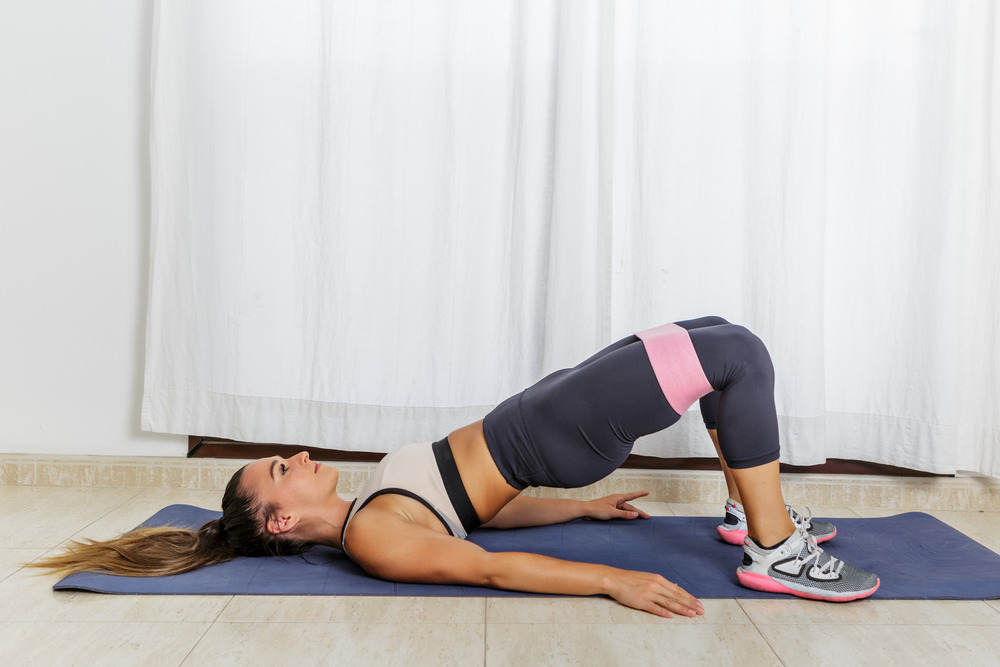At-home exercises can be a crucial part of physical therapy. With virtual physical therapy, at-home exercises can work alongside guidance from licensed clinicians online. Targeted exercises may vary depending on your reasons for using physical therapy, but more generalized exercises can offer benefits to a broad range of people. These exercises can help strengthen muscles, restore motion and improve overall health. When working with remote physical therapy specialists, keeping up with a customized at-home exercise routine can be essential for proper healing. By using highly effective exercises, you can play a part in making your recovery journey quick and successful.
Top at-home physical therapy exercises
- Wall pushups — This exercise is great for building upper body strength. It can also help improve physical stability. To start a wall pushup, stand facing a wall. You should be about an arm’s length away from the wall. Place your hands against the wall at shoulder height. Next, slowly lean inward. You should continue to lean, bending your elbows, until your nose is almost touching the wall. From here, push back to the starting position. This exercise is often done in sets of 10 or 15 repetitions. Wall pushups are a popular exercise because they work out the body as floor pushups would. By using a wall, physical therapy patients with injuries and other conditions preventing standard pushups can still get the exercise they need.
- Ankle alphabet — The “ankle alphabet” is a flexibility exercise that stretches your legs. It can be a great exercise for improving mobility. Begin this exercise sitting in a chair with your feet flat on the floor. Lift one foot up and trace the letter “A” with your toes. Work your way through the alphabet from here, tracing each letter. You can alternate legs as needed. Completing the entire alphabet with each leg is a good end goal for this exercise. Effective exercises like this can be prescribed as part of an at-home physical therapy treatment plan.
- Leg raises — Leg raises start with lying on your back. Keeping your legs straight and your back flat, slowly lift one leg up from the floor. Once the leg is raised, try to hold your position for a few seconds. Then you can return to the starting position and lift the other leg. Ten repetitions for each leg can be a great start. Leg raises are an exercise aimed at strengthening your hips and thighs. Conditions like knee pain are sometimes caused by imbalances in the leg. With the help of exercises like leg raises, you can address these issues.
- Shoulder rolls — Shoulder rolls can help relieve tension in the shoulders. Here is how they work: First, sit or stand with your arms at your sides. For this exercise, it is important to keep your arms relaxed. Next, slowly roll your shoulders forward in a circular motion. As you rotate, the rolling may begin to feel more smooth. After a few rotations, reverse direction. Try to roll your shoulders backward and forward for about 15 to 30 seconds each. Shoulder rolls can improve flexibility while also encouraging muscle relaxation. This can make them a good warmup exercise.
- Seated knee extension — Need to work out your thigh muscles and knees? Many common conditions can affect these parts of the body. To build strength in the legs, seated knee extensions can be a great choice of exercise. Start by sitting on a chair or platform with your feet flat. Slowly straighten one leg out in front of you. As you move, it is important to keep your foot flexed. Hold for a few seconds; then bend your knee and lower the leg. Ten to 15 extensions per leg completed each exercise session can help you quickly build lower body strength.
- Hip bridges — Hip bridges can help stabilize your legs and lower back. When treating back pain with virtual physical therapy, it is important to stay engaged. Exercises like hip bridges are a great way to maintain activity. Lying flat on your back with your knees bent, slowly lift your hips off the floor. Keep your feet flat against the floor the whole time and about hip width apart. When you lift, push through your heels. This helps to engage more of your legs and back. Hold the hip bridge for a few seconds; then return to the lying position. This exercise is typically repeated 10 to 15 times.
Use at-home exercises with expert guidance from Agile Virtual Physical Therapy
Want to put exercises like these into practice? With at-home guidance from Agile Virtual Physical Therapy, you can. As the largest telehealth platform in the nation, Agile is well equipped to serve you. In addition to treating common pains and injuries, our licensed clinicians can also address a variety of specialty conditions. With our personalized at-home physical therapy exercises, you can take the next step to recovery.
Contact our team today for more exercise information or to schedule an initial appointment.

